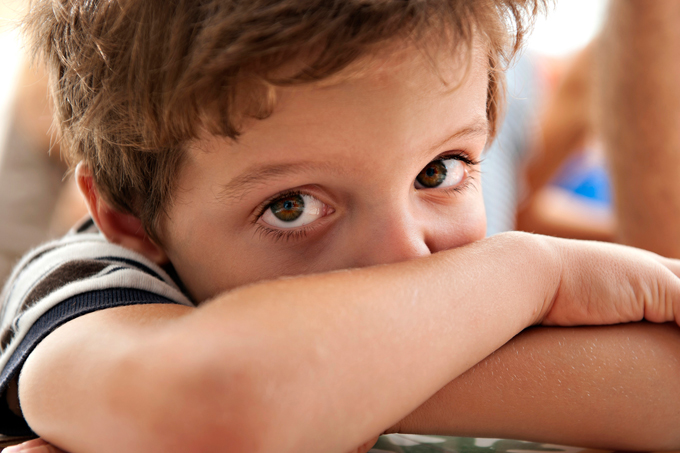
9 Plain English Principles of Trauma Informed Care
This article was co-authored by Joe Tucci & Janise Mitchell,
CEO and Deputy CEO of the Australian Childhood Foundation.
The trauma literature can be overwhelming. Its basis in neuroscience offers incredible insights into its impact. But it also is challenging to decipher and make relevant to the ways in which children that have experienced abuse and neglect can be effectively supported. So here are our top nine principles of trauma informed care – in plain English. These are principles that underpin the work we do here at the Australian Childhood Foundation, and it is our hope that by posting them they might also benefit your work with children and young people too.
1. Trauma significantly alters baseline physiological arousal levels in children.
Children are likely to benefit from environments of care which pay attention to their mood, focus on adjusting their sensory stimulation to help them stay physically present feel safe to connect with others, and engage predictable strategies from carers that reduce reactivity and minimise volatile responses.

2. Trauma reduces cortical capacity to regulate subcortical activation in children.
Carers may benefit from understanding that traumatised children are likely to find it difficult to utilise reasoning and logic to modify their behaviour or reactions. These children are also unlikely to learn from consequences, particularly when they are in heightened arousal states. It is possible to support carers to avoid the frustration associated with the failure of traditional parenting approaches by increasing their knowledge of trauma. If they understand that trauma acts to scramble cortical functioning and reduce children’s capacity to be guided by rule based frames of behaviour, they will be less likely to rely on such parenting methods. In addition, children’s recovery from trauma will be enhanced through interactions with carers which promote physical activity that stimulates lower order parts of the brain responsible for movement, play and balance.
3. Trauma disrupts memory functioning in children.
Children are likely to benefit from strategies which support stressed memory systems, including the introduction of visual and mnemonic cues to prompt short term memory rehearsal and recall, repetition of episodic and narrative structures and the establishment of routines to structure behavioural rehearsal. In addition, children’s ability to generalise learning from one setting to another is also hampered by memory difficulties. As such, care contexts should be resourced to implement co-ordinated plans of responses that support the translation of children’s learning from one environment to the other.
 4. Trauma disconnects children from relational resources that can mitigate its effects.
4. Trauma disconnects children from relational resources that can mitigate its effects.
Traumatised children will require opportunities to experience attachment relationships which offer consistency, nurture and predictability. Carers can be resourced to understand the significance of daily exchanges, knowing that each exchange with their carer can help children to develop ways of experiencing the world and relationships that counteract previous attachment patterns. Increasing carer sensitivity to attuned communication with children is a core competency for caring for children with trauma backgrounds.
5. Trauma restricts the attentional capacity of children.
Children may benefit from care environments which enable them to engage in experiences which redirect their attention away from past trauma oriented activation to the here and now. Carers can be supported to offer children chances to act and react in playful ways which are likely to lead to intensely positive experiences. These opportunities relieve the burden on traumatised children shifting their attention from the past. They also powerfully connect children and carers in shared activities that promote trust and belonging.
 6. Trauma based behaviour is functional at the time in which it develops as a response to threat.
6. Trauma based behaviour is functional at the time in which it develops as a response to threat.
Carers can be supported to understand the purpose and meaning of trauma based behaviour in children, helping to shift their interpretations away from blame to greater acknowledgement of the ongoing impact of children’s abuse experiences. This functional analysis approach enables carers to develop the confidence to plan to respond to children. This analysis can also be translated into other settings such as school, where similar behaviours can intrude on children’s every day experiences.
7. Trauma limits children’s response flexibility and adaptability to change.
Traumatised children may get ‘stuck’ due to constant trauma triggers, and so anact patterns of defensive behaviour that make sense in the light of their initial trauma(s) but may not seem obvious to those around them. It is important for carers to understand, that while in these triggered states, children have little capacity to reshape their responses without the intentional resourcing of adults in their immediate care environment. Carers and other significant individuals will need to be resourced to focus on introducing change in small increments, preparing and supporting children to become accustomed to one change before initiating another. In this context, carers and others can be supported to understand the benefits of predictability and routine for children as well as the need for practicing flexible responses in acts of daily living.
8. Trauma undermines identity formation in children.
Children are likely to benefit from reinforcement by carers and others for examples of qualities that denote positive sense of self and resource personal agency. Carers will need to be resourced to understand the significance of their role in nurturing an emerging self identity specifically at various developmental transition points for children.
9. Trauma diminishes social skills and isolates children from peers.
Children with trauma backgrounds need support to engage positively with peers in social situations. Carers and other individuals will need to appreciate the importance of their role in modelling social skills and respectful interactions. This will resource traumatised children to build a network of relationships which promote connection and afford further opportunities to reconstruct their attachment styles.
There are of course many more. What other principles would you add to our list?
